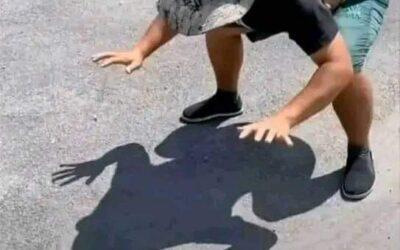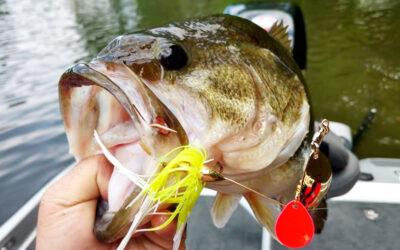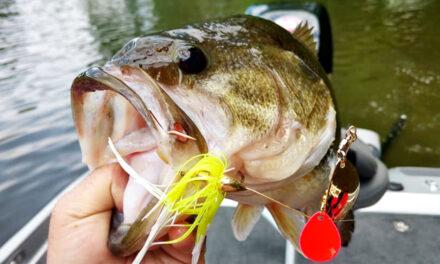We sit down with Bo Merckle of SamsSon Lures to discuss his unique idea for the ultimate memorializing bass fishing lure of your loved one.
Bass Seasons

Bass fishing is a popular sport enjoyed by anglers all over the world. However, different seasons call for different techniques to catch bass effectively. Here are the most productive fishing techniques for each of the four seasons:
Spring
Spring is the spawning season for bass, and it is also the time when they start feeding heavily after the winter. During this time, the best techniques to use are:

Jerkbaits:
As the water warms up, bass start moving closer to the surface, making jerkbaits a great choice. Use a suspending or slow-sinking jerkbait and work it with sharp, erratic twitches to mimic injured baitfish.

Spinnerbaits:
Spinnerbaits are also a great option in the spring, especially in shallow water. They imitate baitfish and can be retrieved slowly or fast, depending on the bass’s preference.

Texas rig:
A Texas rig is a versatile technique that can be used in a variety of situations. It consists of a weight, a hook, and a soft plastic bait. Use a slower retrieve to mimic crawfish or other bottom-dwelling creatures.
Summer
Summer is the time when bass move deeper in the water column and become more sluggish. The best techniques to use are:

Jigging:
Jigging is a great technique to use in deeper water in the summer. Use a football or finesse jig with a slow, steady retrieve to mimic a crawfish or other bottom-dwelling creature.

Deep diving crankbaits:
Deep diving crankbaits can be used to target bass that are suspended in deeper water. Use a slow retrieve to keep the bait in the strike zone for as long as possible.

Drop shot:
A drop shot is a finesse technique that can be used to target suspended or bottom-dwelling bass. It consists of a weight at the bottom of the line and a hook with a soft plastic bait attached above it.
Fall
Fall is the time when the water begins to cool down, and bass start feeding heavily in preparation for winter. The best techniques to use are:

Topwater baits:
In the fall, bass are more likely to be found in shallower water, making topwater baits an excellent option. Use poppers, buzzbaits, or walking baits to create a commotion on the surface and attract bass.

Crankbaits:
Crankbaits can be used to target bass that are feeding on schools of baitfish in the fall. Use a medium retrieve speed to mimic the movement of the baitfish.

Lipless crankbaits:
Lipless crankbaits are another great option in the fall, especially in shallower water. Use a steady retrieve to keep the bait moving and create vibrations that attract bass.
Winter
Winter is the toughest season to catch bass, as they become less active and feed less frequently. The best techniques to use are:

Jigging:
Jigging is still a productive technique in the winter, especially in deeper water. Use a slow, subtle retrieve to mimic a crawfish or other bottom-dwelling creature.

Blade baits:
Blade baits are another great option in the winter, as they can be fished vertically and have a lot of vibration. Use a slow, steady retrieve to keep the bait in the strike zone for as long as possible.

Drop shot:
The drop shot is still a productive technique in the winter, as it allows you to present the bait at different depths and speeds. Use a finesse presentation and a slow retrieve to entice lethargic bass.
Conclusion
While the techniques outlined for each season are generally effective, it’s important to remember that fishing can be unpredictable and what worked one day may not work the next. It’s always a good idea to experiment with different techniques and baits until you find what works best for the conditions you’re fishing in. Additionally, it’s important to stay aware of changes in weather and water conditions, as these can greatly impact the behavior of bass. With practice and perseverance, you can develop your skills and become a more successful bass angler.


















